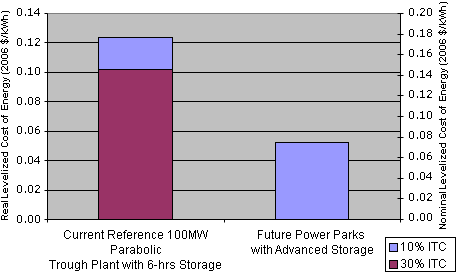
All industry goals are to get down to at least 5 cents per KWH for a levelized cost so that particular technology can become competitive.

To first order levelized costs can represent a common framework for comparing technologies, but only when you know what assumptions are used to define those costs. Different assumptions produce different models

Levelized costs have four basic components:
 land acquisition, manufacturing
of devices, installation of devices. The generic ballpark is to achieve
a capital cost of 1 dollar per 1 watt (e.g. 1 million dollars per megawatt).
Future construction costs are always very hard to predict, however.
land acquisition, manufacturing
of devices, installation of devices. The generic ballpark is to achieve
a capital cost of 1 dollar per 1 watt (e.g. 1 million dollars per megawatt).
Future construction costs are always very hard to predict, however.
 this is usually operational expenses
and annual maintenance ( and generally involves human
salaries more than equipment costs. Health care initiatives can therefore
impact opearational expense projections.)
this is usually operational expenses
and annual maintenance ( and generally involves human
salaries more than equipment costs. Health care initiatives can therefore
impact opearational expense projections.)
 this is usually related to various distribution costs if you
have to import your fuel or energy source. For instance, this would include the actual price
of natural gas for a NG fired electricity plant.
this is usually related to various distribution costs if you
have to import your fuel or energy source. For instance, this would include the actual price
of natural gas for a NG fired electricity plant.
 this is done all the time. For
example
this is done all the time. For
example

Hence, you have to know the assumptions
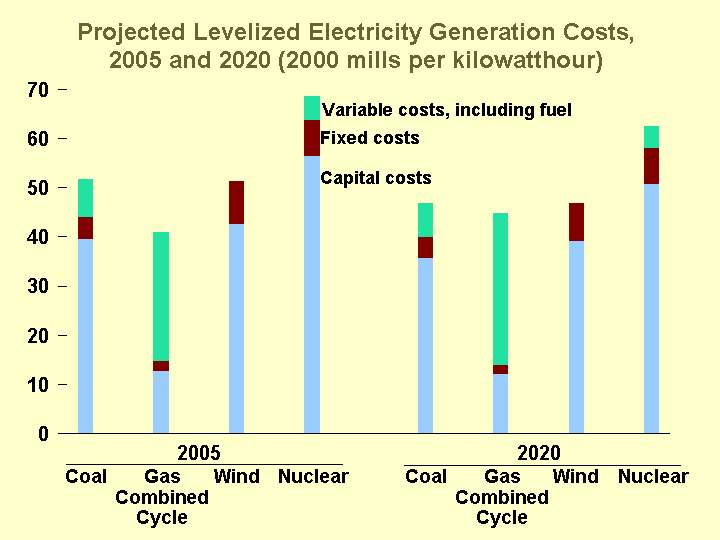
No two credible sources usually give the same exact values for levelized costs for various technologies because the calculations are all done in a slightly different manner. However, usually the relative values (e.g. solar vs wind) are what one should look it.
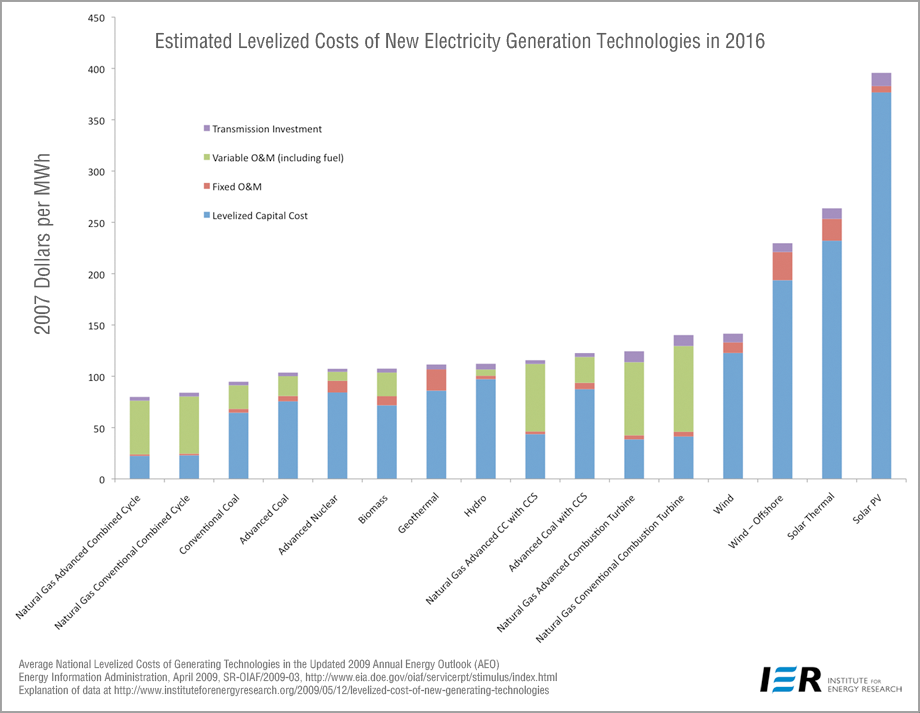
For reasons to be seen later, COE for wind is projected to have the lowest levelized costs of any technology.



But wind is somewhat difficult to do because there is an important potential dependence on transmission line costs:

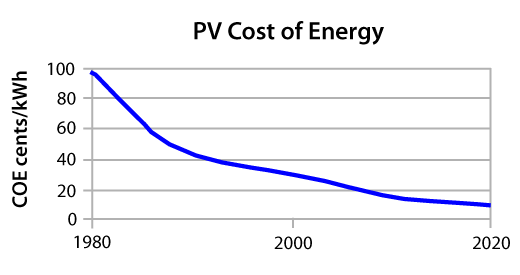

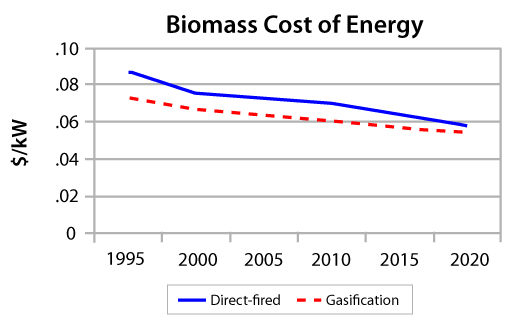
Overall, levelized costs can be a useful framework for undestanding future costs and
which projects need to be invested in but one has to use more than levelized costs because
one can always optimize assumptions to make favorable cases appear.
Levelized costs can also be strongly influenced by Investment Tax Credits or Production Tax Credits. (e.g. any governmental incentive can serve to lower levelized costs and in many cases this is just assumed but not revealed).
